|
|||||||||
|
|||||||||
| Goal: Protect the safety of the food supply from farm to consumer | |||||||||
|
Why is this goal important?
In
addition, animal diseases can threaten the livelihood of Minnesota’s
livestock and poultry producers either through direct losses or because of
diminished market demand prompted by disease concerns.
2. Level of preparedness/response to an agricultural emergency in cooperation with the Board of Animal Health, Department of Health, Office of Homeland Security and Emergency Management. 3.
Compliance with feed regulations concerning mad cow disease (bovine
spongiform encephalopathy, BSE). Despite precautions at the production, processing, shipping and retail level, pathogens sometimes find their way into food. To address this, certain high-risk food establishments are required, and others encouraged, by the MDA to have a food safety plan in place. Plans use the Hazard Analysis and Critical Control Points (HACCP) approach, which identifies the potential contamination or adulteration hazards that could occur at every stage of food processing: harvesting, cooking, packaging, shipping, etc. To ensure consumer safety, each plan then identifies a response that would be taken as soon as a problem is detected. Agricultural Emergency Preparedness: The MDA is upgrading its laboratory detection and investigation abilities, improving its communication and collaboration with public and private sector partners, and expanding its Agriculture Emergency Response Plan to encompass actions that would be taken in the event of an incident of agro-terrorism as well as a naturally occurring disaster. BSE: Feed restrictions are in place to prevent the transmission of Bovine Spongiform Encephalopathy (BSE), commonly referred to as mad cow disease, from infecting cattle in the United States. (BSE can be transmitted when a cow eats the contaminated tissue of other cattle. Protein derived from an infected ruminant can’t be used in feed for other ruminants.)
What is the progress to date?
In addition to the ongoing effort to ensure that food safety plans are maintained, Minnesota is better positioned to respond to an outbreak of a food-borne illness thanks to the opening of the new State Lab Building in 2005. In the past, the Agriculture lab was located in St. Paul, and the Minnesota Department of Health lab was located in Minneapolis. The shared lab has enhanced collaboration and shortened response time on joint investigations of food-borne illnesses.
The MDA has also collaborated with other states to develop Plant, Food and Livestock Emergency Response templates. Each of these plans will be attached to the Minnesota Emergency Operations Plan as an Annex. Minnesota’s Food Emergency Response Plan has been finalized. Additionally, using lessons learned from nuclear plant drills, chemical and food-borne outbreaks as well as preparations for an outbreak of avian influenza, the MDA, the Board of Animal Health, and the Office of Homeland Security and Emergency Management drafted an All Hazards Agriculture Emergency Response Plan. This draft plan augments existing local response plans. Avian Influenza Preparedness: MDA also led a collaborative effort among state agencies and the University of Minnesota to produce fact sheets and brochures for avian influenza awareness and prevention for small flock owners, veterinarians and companion animal owners (http://www.hsem.state.mn.us/Hsem_Subcategory_Home.asp?scatid=146&catid=5). Another preparation measure has involved the MDA’s effort to enhance its laboratory testing capability. In 2005, the Department’s laboratory was one of eight selected nationwide to enter into cooperative agreements with the USDA and FDA under the Food Emergency Response Network. The $1.5 million bond request to complete the Bio-safety Level 3 lab room inside the MDA/MDH laboratory building was approved during the 2006 legislative session. The lab now offers enhanced capability for testing for contaminants as well as zoonotic diseases. BSE: One of the most important BSE safeguards is the 1997 Food and Drug Administration (FDA) ban on feeding ruminant protein to cattle. MDA feed inspectors were among the first in the nation to visit feed manufacturers and distributors to ensure they were aware of and in compliance with the ruminant feed ban. The MDA conducts BSE Rule compliance inspections to ensure that feed manufactured for ruminants does not contain Prohibited Mammalian Tissue (PMT). Since the implementation of the 1997 FDA ruminant feed ban, the MDA has conducted approximately 3,000 inspections of feed and ingredient manufacturers, distributors, renderers, transporters, brokers, pet food manufacturers, livestock producers, and salvage operations to determine compliance with the BSE regulation. In 2005, the MDA was one of eight feed control programs in the United States awarded an FDA Animal Feed Safety and BSE Prevention grant. The grant is enabling the MDA to identify and inspect for BSE Rule compliance in the PMT distribution system in Minnesota. Thanks to this grant and the commercial feed program’s ever-widening focus, the number of inspections has risen from 186 in 1997 to 538 in 2007 year-to-date. This comprehensive approach helps ensure that cattle and other ruminants are not inadvertently fed PMT that is approved for swine and poultry feeding.
The rate of compliance
with the BSE rule among feed handling establishments is near 90 percent,
which is up from 60.8 percent in fiscal year 1998 when the effort began. Over three quarters of the most recent BSE Rule compliance errors were
discovered during FDA Animal Feed Safety and BSE Prevention Grant
inspections. Most violations have been minor—largely record retention or
other technical issues—and do not endanger human or animal health.
Inspectors anticipate that these technical violations will decrease as
outreach and education efforts now reach brokers, transporters and livestock
producers. |
|||||||||
| Goal: Promote environmentally friendly agricultural practices | |||||||||
|
Why is this goal important?
Also, with increasing threats posed by invasive pests such as soybean rust, emerald ash borer and gypsy moth, rural, urban and suburban landowners can help protect Minnesota’s natural resources by following sound pest and nutrient management practices. Such practices can reduce environmental damage and economic costs and prevent the establishment of invasive pests. The gypsy moth poses a particularly significant threat to Minnesota. Considered one of America’s most destructive tree pests, gypsy moth caterpillars attack more than 300 trees and woody plant species. For more than 100 years, the moth has slowly expanded its range, starting on the East Coast in the late 1800s, and today reaching all the way into eastern Minnesota. Once established, the moth can defoliate huge swaths of forest and require the state to invest millions of dollars in eradication and management controls. Another pest, the emerald ash borer (EAB) has killed 8 million trees in Michigan and surrounding states. Minnesota, with more than 872 million ash trees, may be greatly affected if pathways such as firewood carry this pest into our state. How will it be accomplished?
For example, the gypsy moth spreads by hitching a ride on firewood, nursery stock or outdoor items such as lawn furniture being moved from an infested area to an uninfested area. For years, the MDA has worked with the nursery industry to educate workers about the risks of importing gypsy moth on trees and tree products. The MDA also operates a statewide gypsy moth monitoring program using special cardboard traps. This statewide program monitors and surveys the state for start-up moth populations. When these start-up populations are found, the MDA conducts treatments to eradicate the pests. The discovery of soybean rust, a fungal disease that can cause yield losses of 50 to 70 percent in the United States, is a major concern to Minnesota soybean producers. The MDA is working closely with the University of Minnesota and soybean industry leaders to educate and prepare for the 2007 growing season and beyond. Activities include producer education and outreach through the Soybean Rust Task Force, statewide monitoring and a combination of multi-agency efforts. What is the progress to date?
Practices
for Improved Water Quality: During fiscal year 2007, Minnesota
counties participating in MDA’s Ag
The Gypsy Moth Program:
Since 1969, the Minnesota Department of
Agriculture has been monitoring the state for the presence of gypsy moth
populations. Detections are
trending upward as the natural front of the established population is
closi
The Gypsy
Moth Unit has stepped up detection efforts over the years
and has
set out over 20,000 traps statewide in 2007. Beginning in 2005, areas along
the North
Shore received increased attention as traps are no longer being set just
along roadsides, but deeper into the
forested landscape. Intensifying search efforts has, not surprisingly,
caused a spike in the number of gypsy moths captured in the Arrowhead
region. In fact, the easternmost points of Minnesota, both north and south,
have recently been included in the federal Slow-the-Spread Action
Area. Inclusion into this program brings in federal dollars for monitoring
and treatment initiatives in infested areas.
An effective outreach and education program, hotline, and extensive media coverage has greatly increased gypsy moth awareness throughout the state. Trappers speak to landowners individually and leave informational brochures at each property they visit. Recent video productions targeting both nursery and mill industries have helped us reach out to high-risk industries and promote awareness of the pest and the regulations surrounding gypsy moth on a national level. The Gypsy Moth Program Advisory Committee (GMPAC) is chaired by MDA and composed of partners from the U.S. Department of Agriculture, University of Minnesota, and the Minnesota Department of Natural Resources. This committee makes recommendations for statewide gypsy moth management geared toward early detection and successful treatment.
An infestation in the
Tower area of northern Minnesota in 2004 today shows no signs of an
established population after being treated in 2005 with Btk, a
natural bacterium used to eradicate gypsy moth
caterpillars. An innovative mating disruption treatment, used
widely in infested areas along the North Shore in 2006, shows promising
results after one season of trapping but will give us an even better
indication of success in the fall, after two successive years.
Soybean Rust: The MDA worked closely with the Environmental Protection
Agency in approving the proper clearance of certain fungicides to control
rust. The current list of approved fungicides is available on the MDA
website at
www.mda.state.mn.us. It is expected that Minnesota farmers and the
northern cornbelt may experience soybean rust less frequently than growing
regions in the South. Educations programs and regular soybean rust updates
are being coordinated between the MDA and the University of Minnesota. |
|||||||||
| Goal: Improve marketability of Minnesota’s agricultural products | |||||||||
|
The
Minnesota Department of Agriculture has selected three performance measures
as indicators of its overall progress toward improving the marketability of
Minnesota’s agricultural products. Although high somatic cell counts are not a food safety issue, they can reduce the ability of Minnesota farmers to sell their dairy products in European markets that require cell counts of 300,000 or less. High cell counts also reduce the amount of milk produced on the farm and reduce cheese yields at processing plants. Processors pay a premium for milk from herds with lower somatic cell counts. It is estimated that Minnesota’s higher than average somatic cell counts reduce dairy farmers’ income potential by more than $53 million every year.
How will it be accomplished? Somatic Cell Counts: The MDA, University of Minnesota, dairy processors and producer groups launched an information and education campaign in 2003 aimed at helping dairy farmers reduce the state’s average somatic cell count from 420,000 to 300,000 by the end of 2005. The Quality Count$ campaign used radio spots, newspaper articles and workshops to draw producers’ attention to the economic impact of high somatic cell counts. The MDA’s Dairy Development and Profitability Enhancement Teams were also utilized in the effort to reduce somatic cell counts. In this program, the MDA assembles a team of experts (extension agents, business managers, lenders, veterinarians, processors, nutritionists, etc.) to help interested producers find ways to make operational changes that will result in improved milk quality and increased profitability. Biodiesel: To give the biodiesel industry a start, Minnesota passed a law in 2002 requiring that all diesel fuel be blended with at least 2 percent biodiesel by 2005. In 2003, the Biodiesel Task Force was formed to help ensure the state could reach the necessary production capacity and make a smooth transition to a biodiesel blend in the marketplace. The nine-member task force advised the MDA on methods to increase production and helped promote and educate potential biodiesel developers, marketers, consumers and manufacturers. Organic Acreage: The MDA offers educational, technical and financial support to farmers interested in transitioning some or all of their operation to organic production. Educational and technical assistance includes offering workshops for farmers and agricultural professionals, creating publications devoted to organic production systems, direct one-on-one consultations with producers, and connecting farmers to accredited organic certifiers. Financial support includes payments to defray some of the cost of obtaining organic certification and grants to test alternative production strategies. What is the progress to date? Somatic Cell Counts: Thanks to the information campaign, awareness of this issue among dairy farmers has increased. Many producers have taken steps to decrease somatic cells counts in their milk. The average count for the state’s dairy farms dropped from 390,000 in December 2002 to 319,000 by the end of 2006. Producers whose milk products are meeting Europe’s import standard of 300,000 are entering the export market. The MDA’s Dairy Development and Profitability Enhancement Teams played a key role in helping producers improve productivity. Minnesota’s overall milk production rose by 186 million pounds from 2005 to 2006 and the industry is on track for another increase for 2007. The upward trend is attributable to per cow productivity and only a slight increase in the number of cows. In 2006, 482 dairy diagnostic teams were dispatched. Those teams achieved a nearly 9.5 to 1 return for every grant dollar spent. That amounts to an estimated $6.7 million return on state funds as well as an additional $1.3 million in in-kind industry contributions.
Biodiesel: Biodiesel Task Force meetings provided a venue for communication among members of the petroleum industry, the biodiesel industry and other public and private agencies and entities. The Task Force initiated a wide range of discussions and activities on permitting and development issues for biodiesel plant projects and on marketing, regulatory, legislative and distribution issues to address looming marketplace challenges. By the end of 2005, the biodiesel production capacity of plants in Albert Lea, Redwood Falls and Brewster totaled 63 million gallons. The economic impact of Minnesota’s biodiesel industry had grown to $928 million and generated 5,600 jobs. After a national building boom, in January 2007, Minnesota remained among the top four states for biodiesel production capacity. By implementing the 2% biodiesel mandate in September 2005, Minnesota blazed the trail for other markets as they began to address the challenges of normalizing biodiesel usage in the commercial marketplace. The first winter of the mandate saw a variety of circumstances that generated many concerns about biodiesel's impact on winter diesel fuel problems. Through an extraordinary show of public/private cooperation, the State of Minnesota, The Minnesota Biodiesel Council, the National Biodiesel Board, the Minnesota Petroleum Marketers Association, the University of Minnesota, members of the petroleum industry and others developed programs and strategies to address a variety of issues that raised questions about the cold weather performance of biodiesel blends. In the winter of 2006-2007 in spite of reports of increased winter diesel fuel problems outside of Minnesota, our diesel fuel market was not plagued by the controversy that characterized the previous winter. To bring about this relative market stability, the public/private partners mentioned above took the initiative to accomplish the following: 1) state biodiesel producers qualified for the industry's "BQ-9000" program designed to assure that only quality fuel is shipped from each plant, 2)improved testing and evaluation procedures for biodiesel, diesel fuel and filters helped to better identify the cause of fuel related events, and 3) improved communications with consumer and industry representatives. Following Minnesota's groundbreaking work, other state and federal initiatives have been developed to promote greater use of biodiesel, and dozens of new plants are under development here and around the United States. Today, because of Minnesota's leadership, the U.S. marketplace is much better equipped to address quality, forensic, and distribution issues critical to the continued development of clean, domestic renewable biodiesel. Organic Acreage: The
organic sector in Minnesota is strong and continues to grow in response to
increasing consumer interest in organic foods. According to USDA Economic
Research Service data, Minnesota farmland dedicated to organic production
increased more than 50 percent between 2000 and 2005 – from 82,000 to
slightly more than 129,000 acres. Minnesota leads the In 2005, Minnesota ranked fourth in the United States in organic cropland. Organic farms in Minnesota range in size from 2 to 3,000 acres. In a 2007 survey of Minnesota organic farms, a total of 214 certified organic respondents reported an average farm size of 377 acres. This compares with a 346 acre average farm size for all farms in the state in 2006 as reported by the National Agricultural Statistics Service. Minnesota farmers can turn to the MDA for assistance in transitioning to organic production. Each year, the MDA produces a directory of accredited organic certifiers. It also administers a state program that defrays some of the cost of organic certification which averages about $900 per year. The Department also coordinates an annual Minnesota Organic Conference which offers sessions on certification, marketing pointers, business management tips, and production strategies. In addition to valuable networking opportunities, the conference enables attendees to meet suppliers, equipment dealers, crop advisors and organic certifiers. Nearly 400 people attended in 2007. MDA staff
also produces fact sheets about organic production and processing topics and
other resources such as the Directory of Organic Farms which
helps “intermediate” buyers such as organic food manufacturers, marketers,
brokers, dairy farms, grocery stores, organic dairy farms, restaurants, and
food service operations locate organic producers. In a 2007 organic farmer
survey, when presented with a list of nine MDA services, respondents scored
this directory highest. The Department also co-sponsors the Minnesota
Organic Network which facilitates information sharing and collaboration
through a list-serve and monthly conference call. In addition to these three performance measure goals, the MDA continues to work with Minnesota companies to develop export markets. With 96 percent of the world’s consumers and two-thirds of the world’s purchasing power outside the United States, export markets are essential for Minnesota farmers and for a profitable agricultural economy. Exports of food products are growing three times faster than sales in the United States. To promote
international trade, the MDA hosts visiting trade delegations, participates
in trade shows, organizes trade missions to enable producers to meet
international buyers, keeps producers informed about the export
requirements, and connects producers to export assistance and certification
programs. These efforts have helped Minnesota move from its seventh place
rank as an agricultural exporting state in 2004 to fifth place in 2005. In
fiscal 2005, the value of Minnesota agricultural exports was $2.87
billion. In 2006, MDA marketing staff participated in trade shows in 8
countries and 18 states, while hosting 208 visitors from 20 countries. |
|||||||||
|



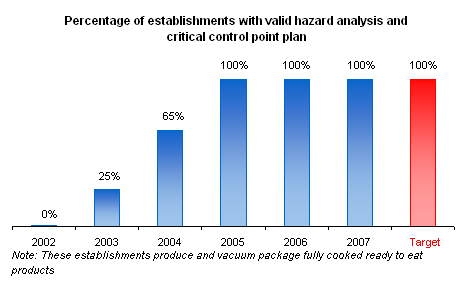 products have written plans in place.
products have written plans in place.
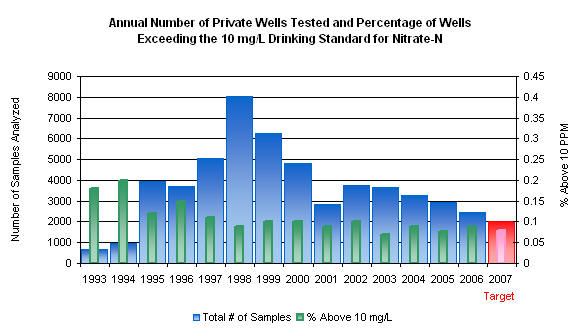
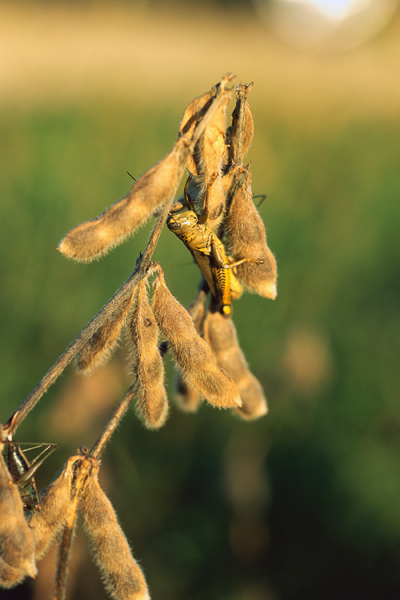
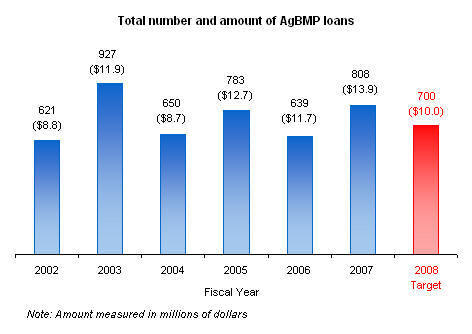
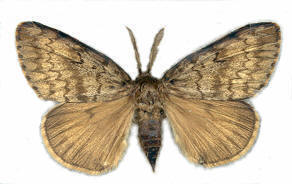

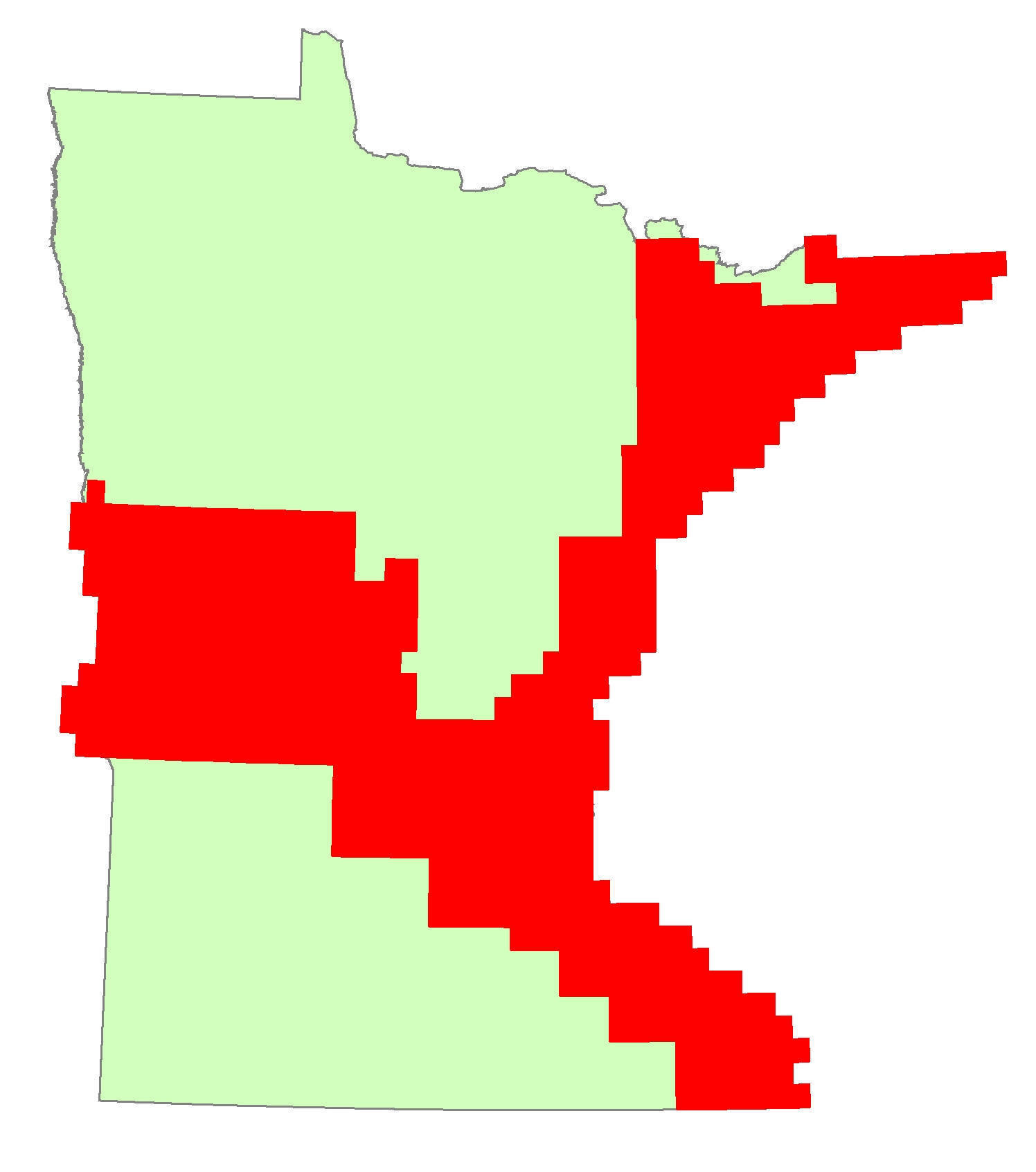

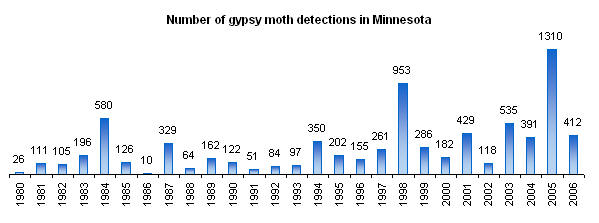
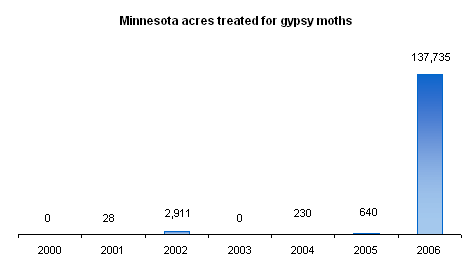 Depending on the number
of moths detected (by trapping them) in a location, the MDA moves in to
eradicate. So far, these spot treatments have kept the moth from getting a
foothold in Minnesota.
Depending on the number
of moths detected (by trapping them) in a location, the MDA moves in to
eradicate. So far, these spot treatments have kept the moth from getting a
foothold in Minnesota.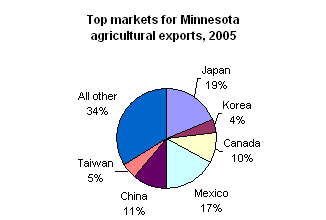
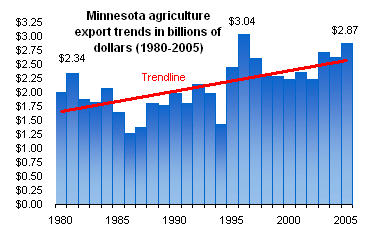
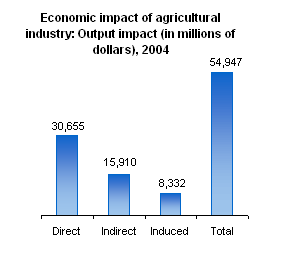
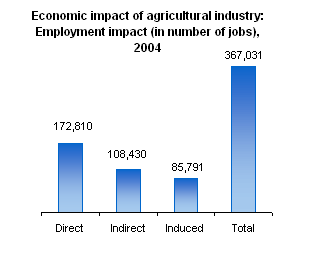
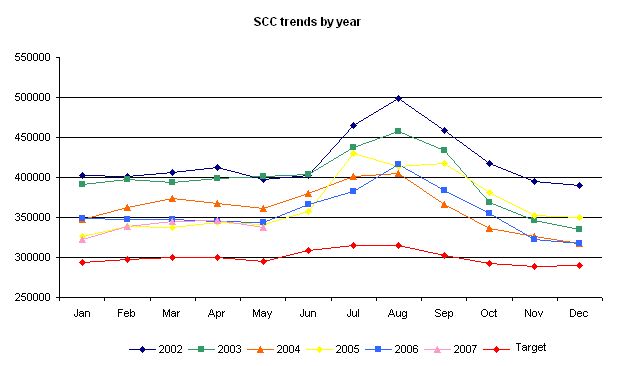
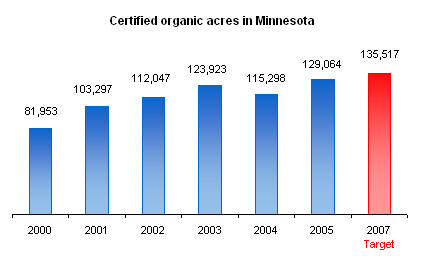 nation in organic
corn and soybean production and remains in the top 10 states for organic
production of other grains, dairy and beef cattle. According to the MDA’s
own estimates, Minnesota registered more than 525 certified organic farms in
2006.
nation in organic
corn and soybean production and remains in the top 10 states for organic
production of other grains, dairy and beef cattle. According to the MDA’s
own estimates, Minnesota registered more than 525 certified organic farms in
2006.